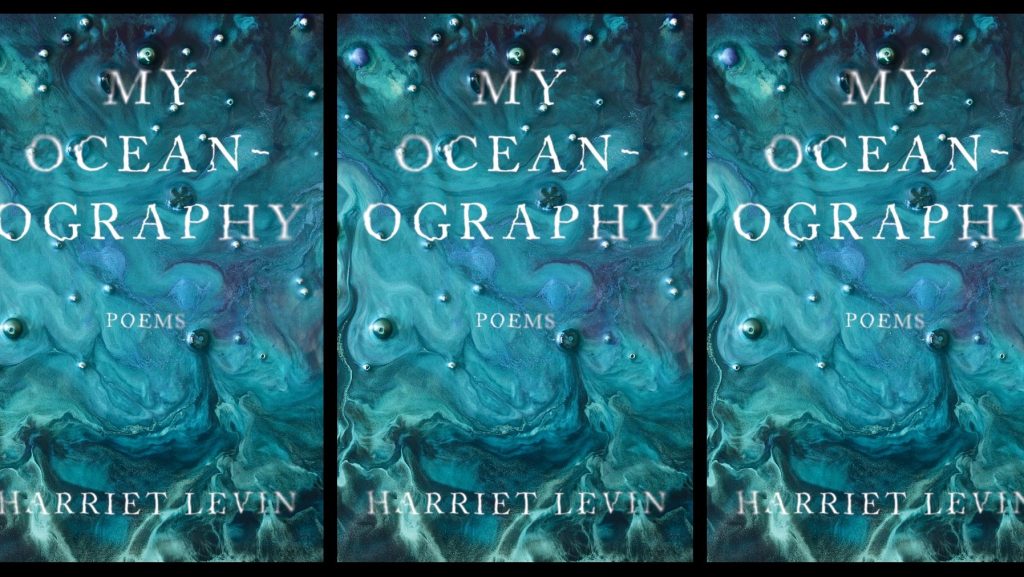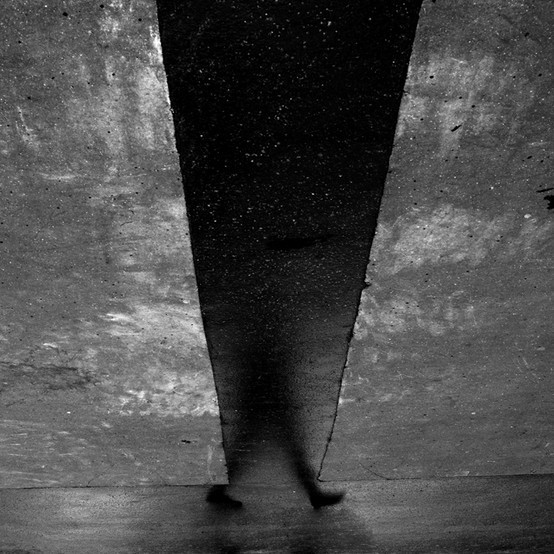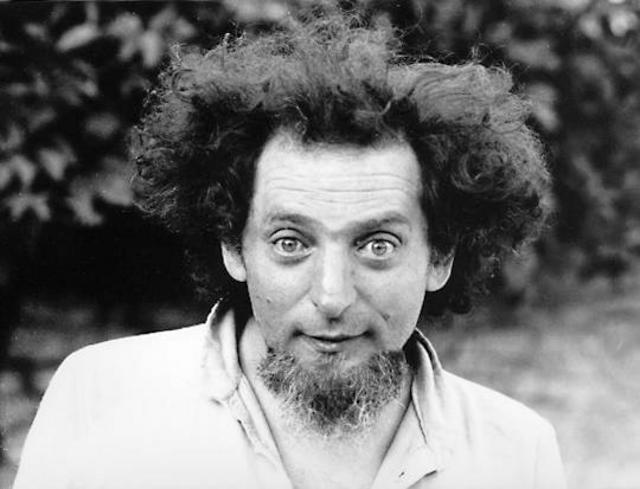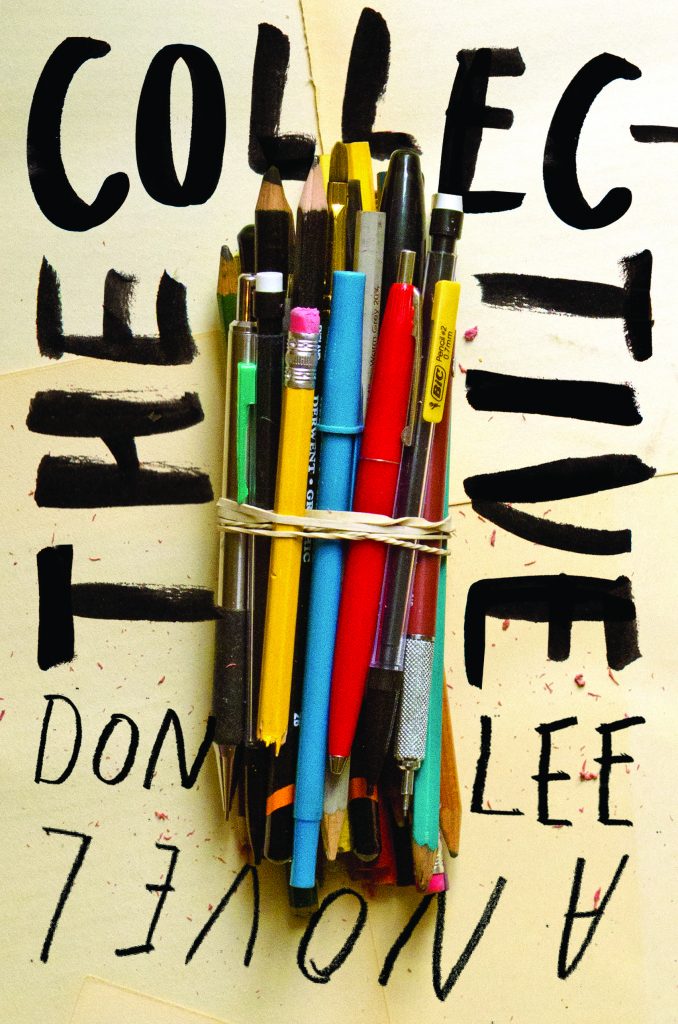What do you know about Modernism? The Process Art movement? How do you feel about Modern art? You don’t have to answer to see that My Oceanography is a collection of excellent poems, but it helps to know something just as it does to wear those headphones in a museum or visit a gallery with cognoscenti. Harriet Levin wrote the poems in My Oceangraphy about, and in, the voice of major twentieth-century artist and sculptor Eva Hesse. If you know Hesse’s biography and work, you’ll be hard-pressed to detect artist from poet. If both are new to you, the twin experience will be a journey to depths.
Some of the poems share their titles with Hesse’s artworks. They mirror this mid-twentieth century artist’s passionate rebellions in her art and marriage. As a child, Hesse survived cataclysm (Nazi Germany) and catastrophe (parents’ divorce, mother’s suicide), but soon found recognition and success before her tragic death from a brain tumor in 1970, at the age of thirty-four. She had gone from Cooper Union to Yale School of Art and Architecture, where she became Josef Albers’s favorite student. In 1961, she had her first show and met a sculptor she quickly married. Bradley Cooper’s incarnation of A Star is Born may inspire you to mentally cast Lady Gaga as Eva Hesse; she married a successful artist whom she eclipsed. Many of Levin’s most incendiary poems describe Hesse’s 60’s marriage and breakup.
Two poems laid out as prose read like Furies on fire. Bumming a Cigarette describes Hesse watching her husband light up another
girl… They’re glowing, the two of them, they’re so attracted… Resting my hand on one of the power saws until I see how close to the blade I’ve placed it, I sashay toward him, pull a cigarette from his pack and snap it in half.
The six-page Chain Polymers is a diary-like report of a trip to North Arizona where mushrooms and mayhem of various sorts ensue.
All I could think about was my husband cheating on me… I was a vagina with teeth, an evening person.
It ends with Hesse’s rebellious assertiveness:
I hid my hands behind my back, afraid of what I might do with them and why was I the only one who heard her father say from his seat in front of the TV, Can’t you walk like a lady? I was going to clamor out of there, make as much noise as Devonian fish growing new fingers and hands from their fins to breathe in air.
By 1963, Eva Hesse had her first one-woman show, followed by an offer to her husband that took both of them to Germany, where opportunity and anguish followed. She read The Second Sex. In Berlin, she saw the marble sculpture of lusty, punished rule-breaker Laocoon, whose title she took for her own first large sculpture. Laocoon is also a poem in the collection, a flash summary in metaphor of the artist’s recurring process and material.
Laocoon
1966
All touch,
That which springs
back, how grass was invented,
strands and strands
and wind,
so that things could start moving on their own
without being detected,
free even as a gaze.
Something shadowed,
like a caterpillar feasting on leaves.
I wanted to be a boy
who sat turned in the direction of his mother,
felt his way into sleep,
played with her hair.
I fidgeted, couldn’t map
the noises that pulled me.
I twisted a strand, coiled it
around my finger, like rope tied
to mooring, and tugged on it,
forcing it to break.
For Eva Hesse, the union of art and life was even more existential than aesthetic. She emphatically asserted that there was no separation between herself and the art she created. Sometimes quoting from Hesse’s Diaries [for the title/poem], always channeling the artist, Levin succeeds in honoring this fusion so much that she/her poems are indistinguishable from Hesse. Her life and work here become twenty-first-century ekphrastic objects for poet Levin, joining a tradition that includes nineteenth-century Keats’s Grecian urn, Browning’s Last Duchess portrait, and William Carlos Williams’s twentieth-century’s rain-glazed red wheelbarrow and white chickens that so much (still) depends upon. More recently, Rebecca Wolff titled a poem Ekphrastic. There’s even a California journal, Ekphrasis, dedicated to ekphrastic verse. Ekphrasis resonates in this new collection, but often obliquely enough to prompt a nagging question: where is the poet?
The book, divided into ten labeled sections, contains the title poem My Oceanography in section V, “Deep Is Form.” Though it was not a title for any of Hesse’s work, it epitomizes the artist’s manifesto:
My second impulse is to keep it [“a strand of algae”] as a totem
of subterranean life, a scrap chiseled
from things that are meant to sink. Deep is form,
like a snail that burrows into silt, shell
growing out of sludgy cravings.
The recurring images of Hesse’s life/art in Smoke in X [“The Road Between the Rims”] are arresting:
If I could use smoke as a medium,
I’d have no trouble creating great art.
I tilt my head back and imagine
a cigarette pressed against my lover’s lips.
Three more left in the pack.
This is the last of him.
Smoke fills my mouth,
passes down my throat and into
my lungs where it infiltrates
every cell in my bloodstream.
I smoke past the redline on the tip,
his body’s imprint –
jawline, nape, neck –
tuck the stub into my jean’s pocket
for his scent to seep through,
linger, live in my pocket as a remnant,
as I throw open the car door,
step forward and out of him.
PBS recently devoted an episode of American Masters to Eva Hesse. Among cognoscenti, she’s to twentieth-century art what Louise Glück is to contemporaneous poetry. I wonder what poet and critic William Logan—who described Glück as “a stand-up vampire”—might say about Eva Hesse and Levin’s collection. With an artist as young as Hesse was, the adolescent impulse is strong (and intentionally irritating), but of course the epochal breaks of the nineteenth and twentieth centuries inevitably found expression in all art forms, re-examining and avoiding assumptions and expectations. Artists can be canaries flying down into mines or diving underwater. Those who see, speak, and act differently offer possibilities tradition can’t. What survives redefines reality. Truth is Beauty, but it’s been Ugly for over a century now. We’re long overdue for a (Ferlinghetti) “rebirth of wonder.”
My Oceanography makes me wonder about Harriet Levin’s connection to Eva Hesse and her art. Her predicaments and exertions move me, too. A lot of Hesse’s art looks like a predictable reaction to the forest-fire destruction that was the break between the Modern Era and the Past. Like the result of any major cataclysm (comet, forest fire, volcano, tsunami, war) the removal of the overgrowth (for good or ill) results in opportunity, a kicked anthill rush to rebuild. New things grow and evolve. Modern art retested basics, experimented with materials and process, all the while in various ways mirroring and expressing fragmentation and anxiety, of loss, change, despair, and hope. Wrestling with received forms is always a Jacob-wrestling-with-the-angel bout that results in limping with a new name. But it also calls to mind what Picasso said when he first emerged from the Lascaux caves: “We have invented nothing.”
In the modern era, the Romantic emphasis on individuality and novelty ironically resulted in schools of similarity. Much modern art looks like repetitive culs de sac. “Confessionalism” crowded twentieth-century poetry. Levin writes about, and in the voice of, Hesse, and while the poems are confessional in form and content, they are not Levin’s confessions per se. They make you wonder where she is or isn’t in the words. They are familiar modern lyrics, without meter, with emphasis on ellipses and oblique comprehension. Modern poets often chose, consciously or not, to write poetry as if it were mathematics, as a foreign language that only initiates and adepts can speak. Possibly, they do this to make readers learn to think in poetry as a unique point of view on reality. “So much depends upon/a red wheelbarrow…rain” could be modern poetry’s E = mc2.
My Oceanography is a voyage to surprising depths. You are called upon to think about the artwork that shares the titles of many poems; the biography of the artist, especially the crisis in her marriage; the language and knowledge in each poem; the motives, presence, and absence of the poet; and your own reactions to the vivid metaphors and events of each poem. Maybe more, but that’s more than enough. Most of all, the hybrid tension of Romantic self-absorption (by the artist) and Classical self-effacement (by the poet) prompts reflection. It’s a mirror of the artist, of the poet, and you.
Harriet Levin’s MY OCEANOGRAPHY is available now from Cavankerry Press. A translation from Harriet Levin can be found in our Iran Issue.




